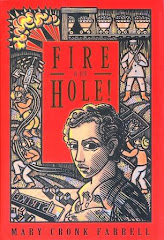
"Yok, kucuk, Agha Sophia" No, a small Agha Sophia, I explained, hoping he would understand that I meant church. My Turkisk-English dictionary, too heavy to carry, I had left in my room.
"Kucuk? Kucuk?" he asked, because undoubtedly I wasn't pronunciating correctly.
The policeman rested an arm on the machine gun strapped across his chest. "Small? Small Agha Sophia?""Yes!" I smiled and nodded.
The elder man walked at least a half of mile with me out of his way toward the church. Along our route he asked people of its exact location. "Dort cadsessi," the fourth street, a fruit vendor had told him. When we reached the correct street the old man waved good-bye but stood waiting for the traffic to pass and for me to cross the cobbled stone road. When he thought I was hesitating, he waved me on, pointing to the church. I dared not waste a second to look for a landmark so that I could retrace my steps in this knot of a village within the city, as I was afraid he would waste even more of his time by taking me by the hand and leading me the rest of the way there.
Down this lane, I first came across a pile of split wood, perhaps half of a cord, wondering how it got there as there were so few trees in sight. A few steps further, I received an answer to my question when I came upon a wood artist's studio. A man and women inside welcomed me. Munir Erboru offered me a seat and told that he has been wood-burning images for twenty years. His student Hasipekaya has been studying with Munir for two years. She is also a computer programing student at a university in Istanbul.
When I asked them about the church at the end of the alley, they smiled and said it was a mosque. It hasn't been a church since 1453. Stepping through the gates to the old church, now the Kucuk Agha Camii, or mosque, I could see remnants of what might have been a cloister wall, which later became part of a medresseh, a religious school, and now served as an artists colony. Ney, reed flute musicians, wood furniture restorers, jewelry makers and miniaturists gather here to work and teach.
This church-mosque-artists studio and street felt imbued with a creative spirit of no specific and yet all faiths.












No comments:
Post a Comment